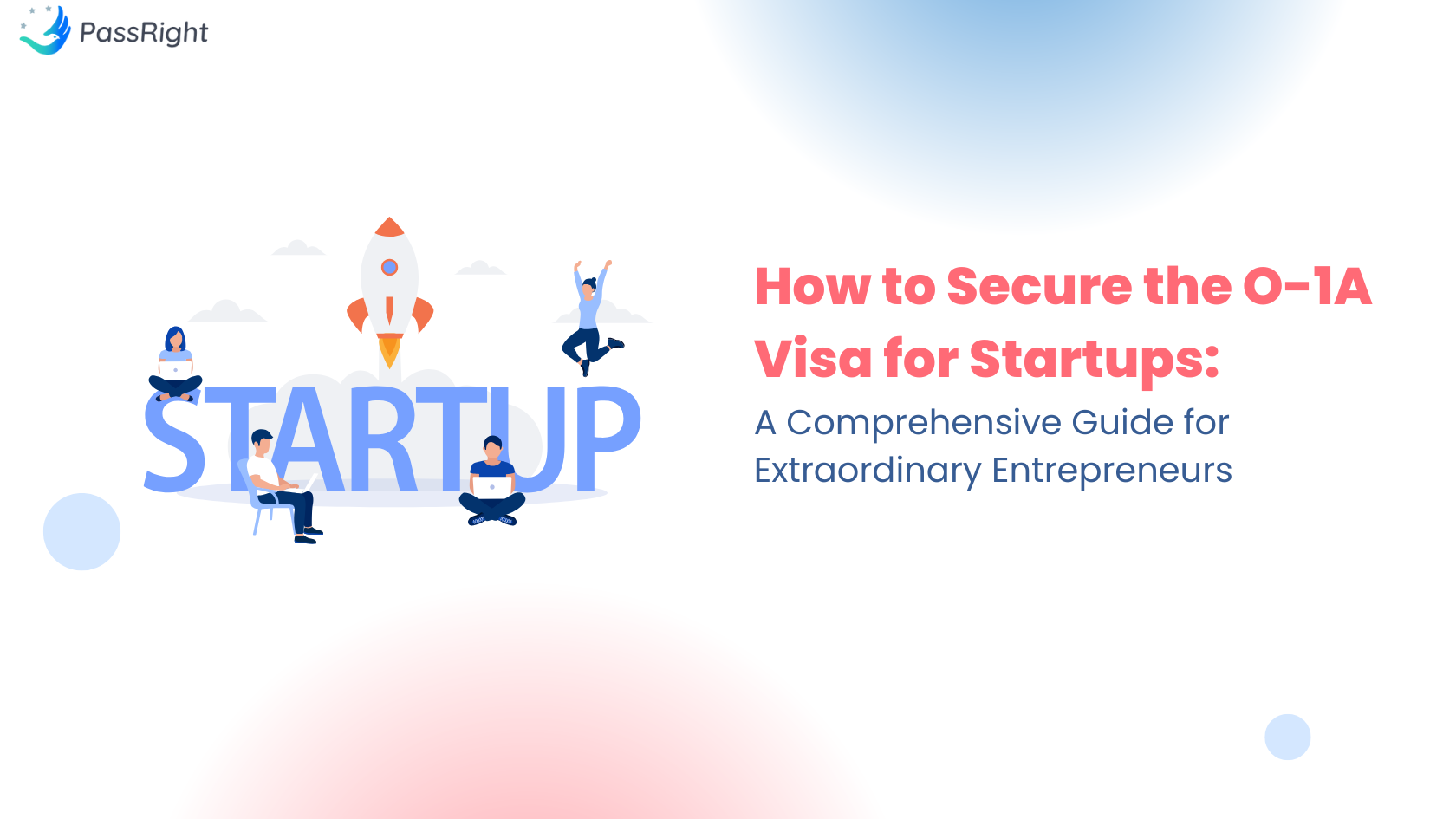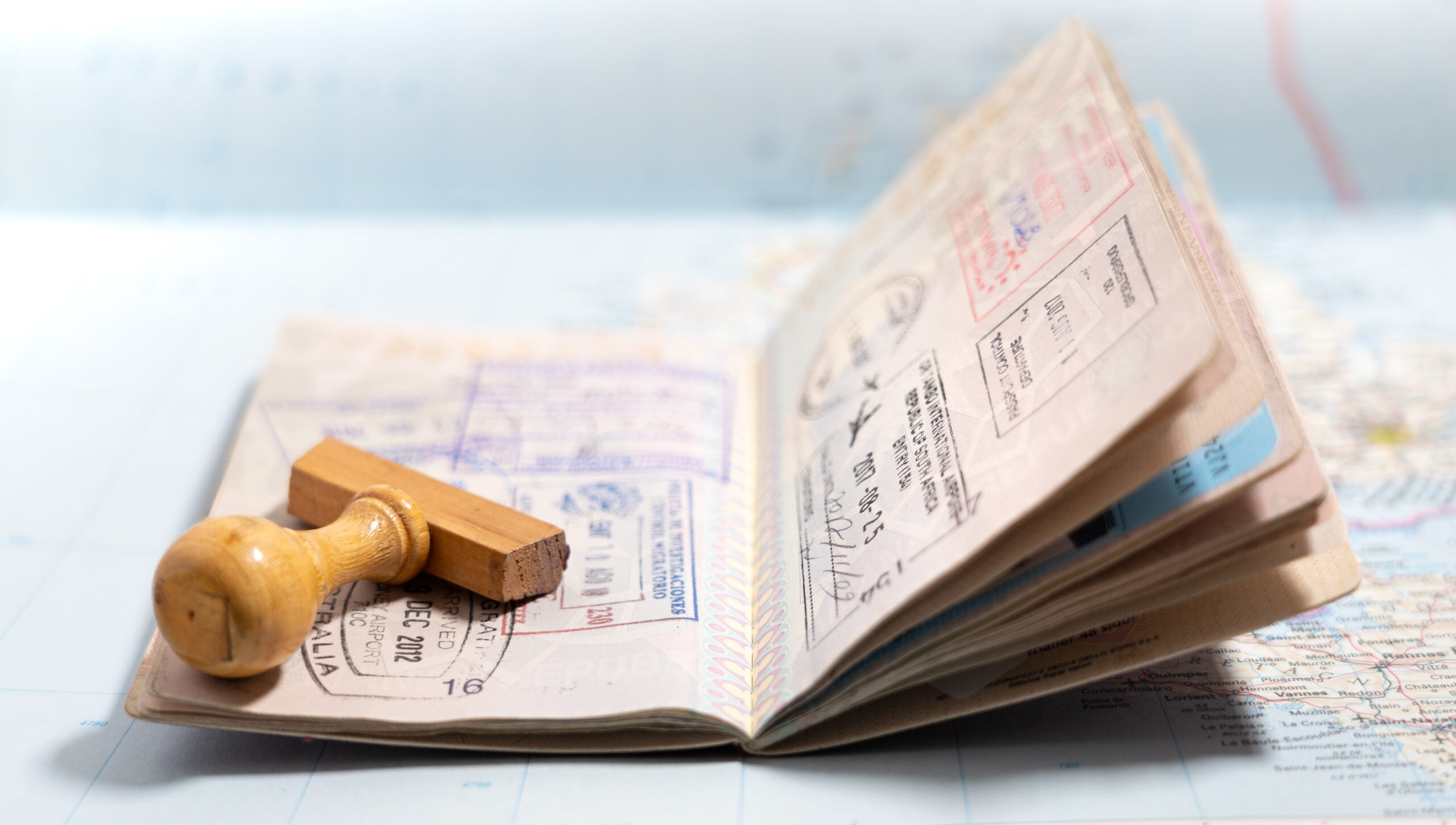Introduction
The O-1A visa has become a key gateway for international startup founders who want to bring their innovative ideas to the U.S. This visa offers a unique opportunity for entrepreneurs with extraordinary abilities to contribute to the U.S. economy while growing their startups.
In this article, we will explore why the O-1A visa is the best choice for entrepreneurs, how to overcome the challenges of the application process, and strategic tips to improve your chances of approval.
Disclaimer: This article provides general information and should not be considered legal advice. For tailored assistance, consult an immigration attorney. If you’d like to speak with our legal team, our customer care representative can arrange a consultation.
What Is the O-1A Visa, and Why Is It Ideal for Startup Entrepreneurs?
The O-1A visa is a nonimmigrant visa designed for professionals with extraordinary abilities in business, education, science, and athletics. Unlike the O-1B visa, which is tailored for individuals in the arts and entertainment industries, the O-1A is perfect for entrepreneurs who are leaders in their fields.
For startup founders, the O-1A visa allows you to use the founder’s own company to sponsor the visa, offering flexibility in employment while showcasing your exceptional talents.
Eligibility Criteria for O-1A Entrepreneurs
To qualify for an O-1A visa, applicants must demonstrate extraordinary ability by meeting at least three of the following criteria:
- Membership in distinguished associations requiring outstanding achievement.
- Published materials about you in major media outlets.
- Receipt of national or international awards.
- High salary relative to others in the field.
- Authorship of scholarly articles or significant contributions to the field.
- Holding a crucial role in a prestigious organization.
- Serving as a judge of the work of others in your field.
- Producing original, impactful work.
Additionally, letters of recommendation from industry experts can significantly strengthen the case. These letters should emphasize contributions and the potential impact of applicant’s work on the U.S. startup ecosystem.
The Benefits of Sponsoring an O-1A Visa for Your Startup
One of the key benefits of the O-1A visa is the flexibility it provides for startup founders. You can use your own business to sponsor your visa, allowing you to fully focus on building your venture without relying on an external employer. Additionally, O-1A visa holders can work for multiple employers, which is particularly advantageous for entrepreneurs managing multiple projects. However, it’s important to note that each employment arrangement typically requires a separate O-1A petition. For instance, if you’re working on projects for both Company A and Company B, you would need to file two O-1A petitions to be legally employed by both—unless you opt for sponsorship through an agent. This is a critical aspect of the O-1A visa and should be discussed with an immigration attorney to ensure compliance with all immigration regulations.
Unlike many other visa categories, the O-1A visa has no annual cap. This means entrepreneurs don’t have to worry about a lottery system or restricted application windows. You can apply at any time during the year.
O-1A visa is a nonimmigrant visa, but it offers a dual intent option, allowing holders to pursue permanent residency without jeopardizing their visa status. The EB-1 green card, which shares similar requirements, can be a natural next step for O-1A holders aiming for a green card.
Step-by-Step Process of Sponsoring O-1A Visas for Entrepreneurs
- Work closely with an immigration attorney to ensure you meet at least three of the USCIS requirements for extraordinary ability. An attorney can help you evaluate your qualifications and advise on how to best present your case to meet the stringent O-1A criteria.
- Gather the right evidence. Your attorney can help identify the most compelling documentation and assist in drafting and organizing it for submission.
- Your startup, as the employer, will file Form I-129, Petition for a Nonimmigrant Worker, on your behalf. Normally with the support and representation of the immigration attorney, if you decided to work with one.
- Wait for USCIS Decision – processing times can vary, but premium processing is available for a faster decision (within 15 days). Throughout this waiting period, your attorney will monitor the status of your application and address any potential issues or additional requests from USCIS that may arise.
- Visa Interview Preparation – once your application is approved by USCIS, your attorney will assist you in preparing for your visa interview at the U.S. embassy in your home country. This is necessary unless you were in the U.S. when the application was submitted and the change of status request was selected on Form I-129.
Key Challenges Startups Face in Sponsoring O-1A Visas
1. Evidence that is confidential – founders are expected to present a portfolio of achievements, such as media features, industry awards, evidence of capital funding from reputable venture capital firms to support their case. This is sometimes difficult to provide as certain evidence is either not available or confidential.
2. Proving Startup Viability – startups must demonstrate that the company is legitimate, legally operational, and ready to do business in the U.S., which is sometimes difficult because business is new. For instance, many startups incorporate in Delaware but run their business in California without obtaining the necessary local licenses and permits. To establish viability, the startup needs to prove it’s a real and functioning entity with a proper business structure, including a website, a physical address, and all required legal registrations in the state where business will be conducted.
O-1A Visa vs. Other Visa Options for Entrepreneurs
When compared to other visa types, the O-1A visa stands out as a top choice for highly skilled entrepreneurs.
- O-1A vs. E-2: The E-2 visa is for investors from treaty countries, requiring a significant investment in a U.S. business. Unlike the O-1A, it does not offer a direct path to a green card and is only available to nationals of treaty countries.
- O-1A vs. L-1: The L-1 visa is for intra-company transfers and is limited to individuals working for a foreign company that has U.S. operations.
- O-1A vs. H-1B: The H-1B visa is often used by startups, but it is subject to an annual lottery cap and has strict limitations on the number of available visas each year. Additionally, H-1B holders must adhere to strict wage requirements. The O-1A visa, on the other hand, does not have an annual cap, provides more employment flexibility, and is tailored to individuals with extraordinary abilities, making it a more attractive option for highly talented entrepreneurs.
How O-1A Visas Benefit the U.S. Startup Ecosystem
By allowing international entrepreneurs to bring their exceptional talents to the U.S., the O-1A visa contributes to innovation and economic growth. Founders from around the world can leverage this visa to scale their startups in the dynamic U.S. market, driving job creation and contributing to industry advancements.
Conclusion
The O-1A visa is a game-changer for entrepreneurs looking to make their mark in the United States. By showcasing media attention, industry recognition, and proving startup viability, founders can build a compelling case for approval. With thorough preparation, this visa opens doors for extraordinary entrepreneurs to thrive in the U.S. startup ecosystem.
FAQs
Can a startup sponsor an O-1A visa?
Startup companies can act as the sponsor for an O-1A visa, if it fulfills USCIS’s sponsorship requirements.How long can an O-1A visa holder stay in the U.S.?
The O-1A visa is typically granted for up to three years, with the option for one-year extensions if the individual continues to meet the qualifications.Can family members accompany O-1A visa holders?
Spouses and unmarried children under 21 can accompany the O-1A visa holder on an O-3 visa.How long does the O-1A visa application process take?
The preparation of the O-1A visa application typically takes anywhere from 6 weeks to 3 months, depending on how quickly the required evidence can be gathered. In some cases, it may take as long as 6 months if the documentation is complex or difficult to obtain. Once the application is submitted, USCIS processing times can vary significantly, ranging from a few weeks to a few months. However, if you file with premium processing, USCIS guarantees a decision within 15 days. It’s also important to note that even if you initially choose regular processing, you can later upgrade to premium processing to expedite the decision at any point during the application process.









